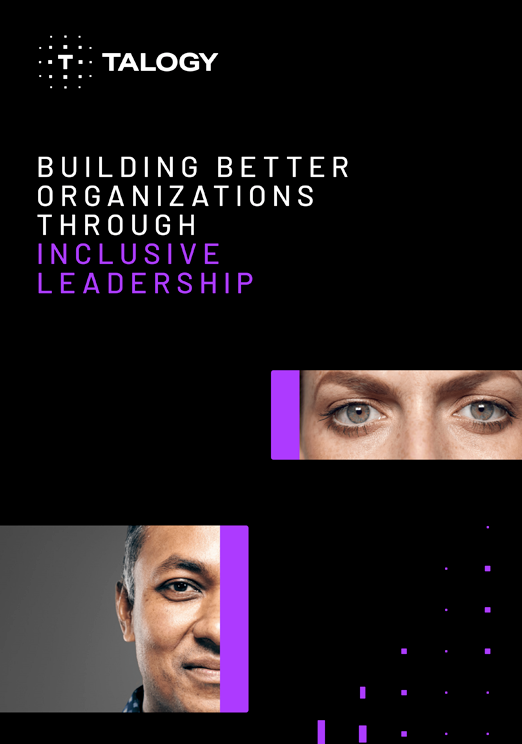Organizational culture is tied to organizational purpose. Why do your business? What do you hope to achieve? How will your employees help to get you there in a way they can believe in, too? Creating a sustainable work environment where employees feel engaged, loyal, and satisfied should be the goal of every organization. Good company culture breeds employees who enjoy their workplace, the work they do, and those they work with. Without it, employees may be inclined to take their skills and knowledge elsewhere.
But the culture of your organization doesn’t always reflect the climate of your organization. The company’s mission, diversity initiatives, incentives, and perks all make for good culture on paper, but does the climate in your workplace reflect the culture you hope to have? Do your promises live up to your reality?
Does your #OrganizationalClimate match your #OrganizationalCulture? @CaliperCorp explains what's the difference, and what to do to make sure they're aligned. Learn more in the latest from their blog: Share on XThe terms organizational culture and organizational climate get thrown around a lot, often interchangeably. But they’re not the same thing — and the distinction is important.
What is Organizational Culture?
Simply put, organizational culture is your company identity. It’s your values and the norms that have arisen organically over time.
Common Values Include:
- Curiosity – Embracing the desire to be continually learning and growing
- Quality – Assessing accuracy and logically thinking over situations and problems
- Innovation – Risk-taking and introducing new ideas
- Outcome Orientation – Focusing on overall results and achievements
- Diversity and Inclusion — creating space for minorities, women, those with disabilities, and other underrepresented groups.
For example, a bank might have,what would be considered, a more traditional company culture. A corporate bank is a structured environment, as the banking industry is heavily regulated by well-established laws. Banking is an old industry, which suggests the culture has had a long time to develop and is firmly ensconced.
At a bank, you’ll likely find a culture where people are expected to follow proper channels and defer to the chain of command — where being experimental in your methods and practices would be less favorable and where staff members present a calm, courteous face to the customer so as to convey trust and reliability.
On the other hand, a company like a tech start-up is likely to be more collaborative and unstructured — where disruption, innovation, and entrepreneurship is not only welcome, but also encouraged. Disruptive conflict, wild ideas, and challenging traditions might even be a key value in their culture. Everyone from the company president to the newest intern may be able to communicate laterally and casually.
Finding employees who match your values and exhibit natural behaviors that fit within your organizational goals is key to crafting an organizational culture that’s built around the things that matter most to your business.

How the Pandemic May Change Company Culture
Since the outbreak of COVID-19, many workplace conventions have been upended. A lot of people are working from home indefinitely, changing the way we interact with our coworkers, managers, leadership, and how we structure our work. Our idea of work/life balance has been recalibrated.
And born out of the pandemic comes another re-focus on values: The Black Lives Matter movement has challenged employers to take a closer look at diversity, equity, and inclusion programs and examine how they actually work with employees. Your company may say they value diversity — but do your underrepresented groups feel included? Is every seat at the table equitable? It’s an important place to review whether your organizational climate reflects the culture you aim to foster.
Defining Organizational Climate
Organizational climate is the way people experience the work environment. What is it like to work there? How do individuals feel when operating in that culture? How do business conditions, management decisions, and the actions leadership affect the general mood? When you consider the collective experience of all the talent in the organization, you’re evaluating climate.
Revenue swings, for example, can affect climate without changing the culture. If you work for a company built around a culture of process and efficiency, and then revenue drops, the solution would likely be to double down on improving processes and efficiencies — this might mean cutbacks in other areas, consolidation of responsibilities, or increased workloads. As a result, employees may start to feel resentful or despondent that their bonuses were canceled, coworkers were laid off, or they’ve lost certain perks or benefits. In this scenario, the culture stayed the same, but the climate changed.
If your company has a diversity and inclusion initiative, how many people from underrepresented groups have you actually hired? What positions do they hold? How many of those individuals are in managerial positions or within leadership? It’s one thing to have a diverse staff, but if every group isn’t represented through every department and at all levels, does the climate really reflect the value your organization claims as part of their culture? Your organization may have the diversity, but you can’t leave out the inclusion.
How Coaching Impacts Climate
An important part of fostering an organizational climate that is representative of your organizational culture is through leaders who embody those values and exhibit them throughout their work. A shift in mindset — from manager to coach — helps leaders not only demonstrate organizational values, but also listen to what’s happening throughout the workplace and help promote and build a climate where employees feel seen, heard, and supported on their way to achieve the desired culture.
Bonus Material: Check out how Caliper Essentials for Coaching can transform your leadership strategies as well as develop and strengthen your employees.
How does a coaching mindset help managers build a better #OrganizationalClimate? @CaliperCorp discusses why #CompanyCulture is lead-by-example: Share on XIssues That Arise With Organizational Culture
Problems of organizational culture arise when the existing culture is detrimental to achieving business goals or realizing the organization’s ideal state. For example, a tech company where the culture is collegial, collaborative, and academic — and where behaviors that are brash, autonomous, or cut-throat are discouraged — may be an engaging place for easygoing managers and low-key product engineers to work. However, the tech world is highly competitive and disruptive, and while internally, a tech company such as this may flourish, they may find themselves unequipped to deal with the characteristically more aggressive and venturesome competitors within the industry.
Other drawbacks to organizational culture include:
- It can become too entrenched, making it difficult to adapt or change
- It may ostracize employees who don’t feel like they fit in, or cause people to isolate themselves from coworkers they can’t relate to
- May form cliques or biases
- May make it difficult for employees to present opportunities for improvement or express concerns
Problems of Organizational Climate
Problems of organizational climate arise when you’re not paying attention. At companies that seem relatively healthy, management tends to chug along and maintain the status quo. However, many organizations are vulnerable to slowly escalating problems because they aren’t tuned in to the daily experience. It may be a problem with communication and messaging, general dissatisfaction with leadership and business decisions, or deeper structural and procedural flaws that are fomenting frustration and harming engagement and satisfaction.
It’s a good idea for business leaders to keep a finger on the pulse of the organization, so to speak, and not allow themselves to be blindsided. Employee surveys are a good way to get a broad sense of staff members’ prevailing thoughts, and survey results can serve as a springboard for programs around improved transparency, greater collaboration, better alignment of talent, or greater potential to address business concerns.
Employee surveys can address a number of different areas, all answers/results providing a clearer picture of how motivated employees are. Areas the survey may cover are:
- Individual feelings and beliefs
- Whether employees feel properly represented and seen
- How well leadership demonstrates and promotes company values
- Whether employees have the resources and support they need
- How employees fit in with their managers and team members
- Any additional open-ended concerns, suggestions, or ideas
By taking steps to ensure a positive culture and a healthy climate, management can both move the company forward and perform the preventative maintenance needed to maximize business results.
Caliper has the tools and expertise to identify and correct problems of culture and climate within your organization. Contact us today and tell us about your ideal future state. We’ll help you get there.


